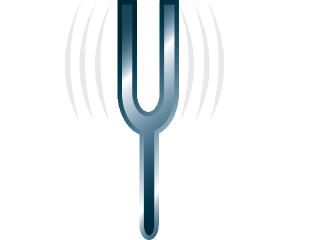
Not withstanding the restraints imposed by string tension, you can tune your guitar however you want and experimentation is never a waste of time. It helps to know what you're doing though.
Open tunings
Most people prefer open tunings for 3 and 4 string guitars. An open tuning is simply a tuning in which all of the strings played open, that is without the use of frets or a slide, produce a pleasing harmony. Sometimes this means a full chord, on a 3 string it is common practice to play a chord fragment, the 1 and 5 notes from a major scale. You can learn more about that at the theory pages but for now it's enough to know that the notes played on the open strings all sound good together.
The 3 string
Most 3 string guitars use a 151 tuning. This means that the top and bottom strings both play the first note of a scale, each one an octave apart, and the middle string plays the fifth note of that scale. These two notes, the 1 and the 5, are sometimes called the tonic and the dominant and are the two first notes in the harmonic series. They strongly denote the key centre but give us no information about the quality of a chord, whether it be major, minor, 7th etc...as nearly all chords will contain both of these notes.
This 151 tuning is also an important element in traditional 6 string open tunings such as Spanish and Vestapol. It's a no-brainer really, if you're starting out use 151 tunings and as GDG allows you to do so with minimum disruption to string tension, it's a good place to start. To play slide you'll want no smaller than .018, .028 and .38, if you're not sliding you can go as low as .016, .026 and .036 (electric strings 25.5" scale). Remember a significantly shorter scale would mean thicker strings.
The 4 string
Now we're talking a whole different instrument. The extra harmonic possibilites offered by that 4th string allow you to play a much larger range of chords and there are considerably more options for tuning, you may even want to use standard tuning and forget about playing open. To do that just pick any 4 adjacent strings from a 6 string pack. You can then use all of the resources that are out there for 6 string guitars, just be aware of which strings you use so that you can translate accordingly.
Open tuning is an excellent choice for blues and traditional songs, it also allows you to play slide with a lot more freedom so that's where we focus now. All of the courses and other resources here for 4 string use an open tuning GDGB, the four middle strings in Spanish tuning. It's essentialy the same as the 3 string tuning mentioned above but adds the B string, the 2nd string from a standard set, on top. From a lighter set that would mean adding a .011, for the medium set quoted above you'd add a .014. This B note on top is the 3rd note in the G major scale and completes the major chord in G.
This tuning has a number of advantages. Firstly it is close to the 151 tuning that has become a standard for 3 stringers. This allows you to use a lot of the resources already out there for 3 string guitars, and there are plenty. The 1 and 5 on the bottom also allow you play a lot of rhythmic patterns that have very common in blues and rock. The 2nd string plays B in standard tuning as well so it's less of a hassle when selecting strings.
Another possiblity worth exploring for 4 string, and I've not done it here (yet), is the top 4 strings in Vestapol tuning, DF#AD. This is a closed voicing so all of the notes are within one octave making the range slightly lower but the notes are closer together. The bottom D note is much higher than a G so there's less bottom end but the top string tonic and the major 3rd closer to the 5 gives you a lot more versatility when playing slide blues. This is a great tuning but don't go for it if you're just starting out.
